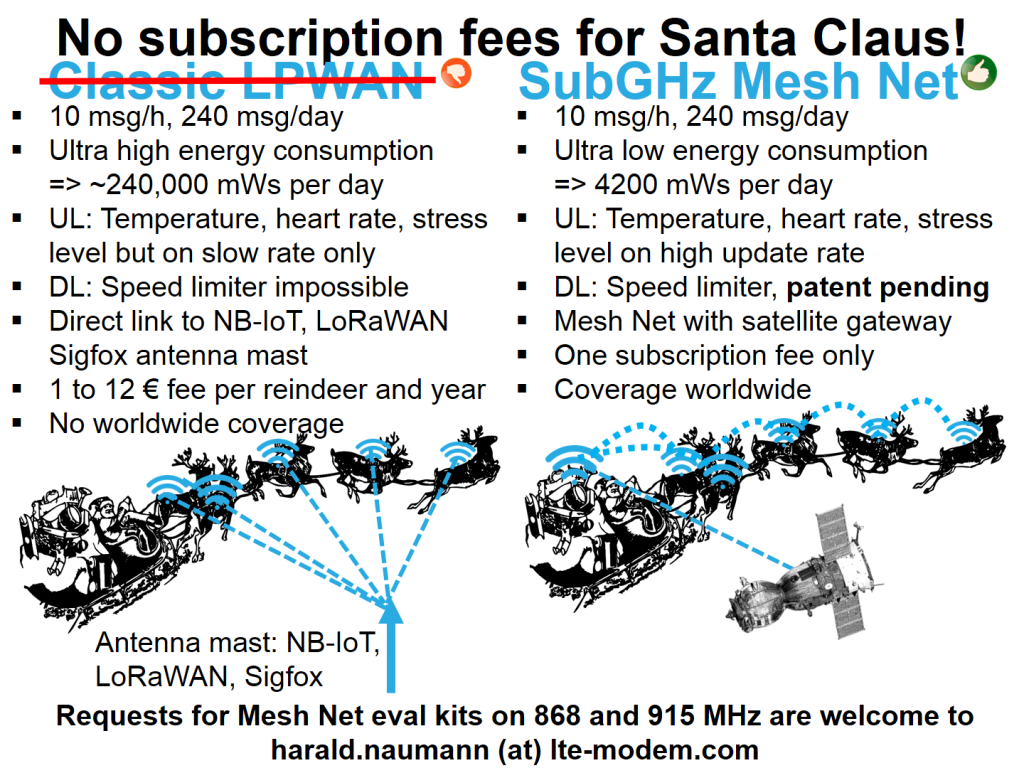As Santa Claus will soon be bringing presents, let me tell you a seasonal tale of the energy and cost savings with SubGHz Mesh-Net crafted as a Christmassy challenge.
Santa’s sledge moves around the world. His reindeer are changed several times during Christmas night. Each reindeer, all the elves and the toy factory at the North Pole receive Mesh-Net radio modules.
The radio modules on the reindeer record the stress level and transmit it to the sledge . The Mesh-Net on the sledge, in the factory and on the reindeer pasture builds itself up and heals itself. Every sensor is also a router at the same time. In this SubGHz Mesh-Net, the routers also go to sleep.
The stress level is transmitted 10 times per hour with 20 bytes of data. This results in 240 transmissions on 868 / 915 MHz (license-free) and 4200 mWs per day at 104 dB link budget. The transmission costs per reindeer are consolidated onto one SIM card on the sledge. Five reindeer with a change every hour results in 120 reindeer. In addition, there are hundreds of elves and in addition the sensors in the toy factory.
So why not an LPWAN?
At the North Pole, there is no NB-IoT, public LoRaWAN or Sigfox. If a public LPWAN were built at the North Pole, it wouldn’t help us on Christmas night. On this silent night, Santa travels within 24 hours to every place with good children on this blue planet. However, there is no worldwide LPWAN. Even if we had one, you need about 1000 mWs per message with NB-IoT, LoRaWAN or Sigfox. If you want to know how to calculate the 1000 mWs, you can read in my LPWAN Cookbook that will be publisehd in 2020. For each reindeer, 1000 mWs x 240 messages result in 240,000 mWs per day.
SubGhz Mesh-Net versus LPWAN comparision
So 4200 mWs with 0 Euro costs for communication are compared to 240.000 mWs with 1 Euro to 12 Euro per year. 240.000 mWs / 4200 mWs = ~60. A Mesh-Net battery can be about 60 times smaller than that required for LPWAN. A double A (AA) cell has approx. 3 Wh = 3 x 1000 x 3600 = 10,800,000 mWs. 10,800,000 mWs / 4,200 mWs per day = 2,571 days = 7 years. 7 years operating time, with 613,200 messages without a battery change, recharging or energy harvesting. The Mesh-Net concept clearly outperforms LPWAN.
If you have read my little ” wireless ” Christmas novel up to here, thank you. I wish you a Merry Christmas and pleasant hours celebrating with family and friends.
Enquiries about SubGHz Mesh-Net are welcome at harald.naumann (at) lte-modem.com
